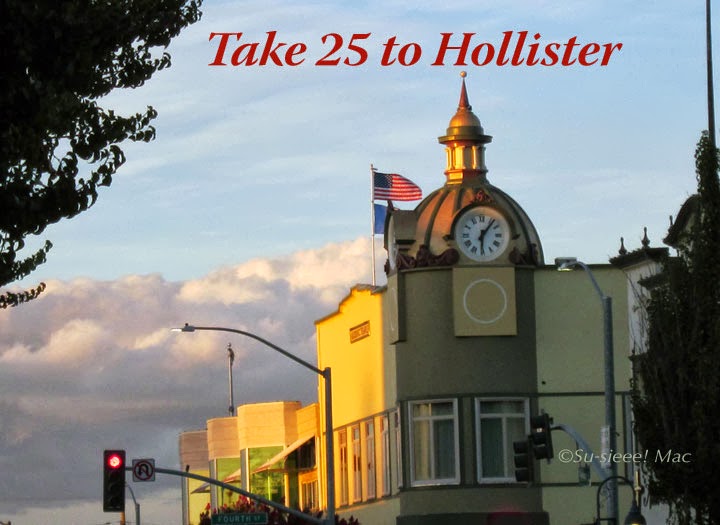
Some of you may recall picnicking, hiking trails, dipping your toes in the mineral springs, or swimming in the freshwater pool at the Gilroy Yamato Hot Springs in the eastern foothills outside of Gilroy. The resort closed its gates to the public in the 1980s. Today, it is part of Henry Coe State Park.
A couple of weeks ago the Gilroy Yamato Hot Springs celebrated its 20th year as a historic landmark. It's a California Historical Landmark as well as on the list of the National Register of Historic Places.

The resort has an amazing history that dates back to 1865 when Francisco Cantua stumbled upon the mineral springs while seeking lost sheep from his flock. He claimed the area and turned it into a campground, but shortly afterwards sold the property to George Roop. He, in turn, with the help of partners, developed the hot springs into a big-time resort. By, 1874, a large hotel and 18 cottages were built, which could house up to 300 visitors.
And, people did come. Locally as well as from far away. Many, including the rich and famous, such as Adolph Sutro, James Phelan, and Claus Spreckels, from San Francisco took the three-hour train ride to Gilroy, stayed overnight at a hotel, then, the next morning, jostled for three hours in a horse and buggy on 12 miles of dirt paths to the hot springs. Visitors often stayed for one or two weeks. The springs was considered the best in California, and until the mid-1930s, it was a popular destination place.

In 1938, Harry K. Sakata, a well-known lettuce grower in Watsonville, bought the property and changed the name to Gilroy Yamato Hot Springs. Yamato is the word for Japanese. Sakata's goal was to develop a retreat for Japanese Americans.
Then came the U.S. entry into World War II and the internment of the Japanese American population in very remote locations. Sakata's Caucasian business partners took over the management of the hot springs, returning the property to Sakata after the war. In the postwar years, Sakata invited interned families to live on the property as a place to transition back into American society.
Then came the U.S. entry into World War II and the internment of the Japanese American population in very remote locations. Sakata's Caucasian business partners took over the management of the hot springs, returning the property to Sakata after the war. In the postwar years, Sakata invited interned families to live on the property as a place to transition back into American society.

The famous hotel and clubhouse are no more, nor the soaking pools or the freshwater swimming pool. Many of the cabins are still on the grounds in various stages of disrepair, which are being renovated by volunteers known as the Gilroy Yamato Hot Springs (GYHS), formerly known as the Friends of Gilroy Hot Springs. GYHS is a subgroup of the Pine Ridge Association, the nonprofit group that provides interpretive programs for Henry Coe State Park. GYHS' goals are to protect, preserve, and restore the site and its historic buildings, as well as to re-establish the landmark for public use.

The public can visit Gilroy Yamato Hot Springs when GYHS hold guided tours, which are usually the 2nd Saturday and 4th Sunday of the month. To ensure one is available, call GYHS at 408-314-7185 or send an email to info<at>gilroyyamatohotsprings<dot>org.
By the way, GYHS is seeking a campground host, with his or her own trailer or motor home, to live on the site. For more information, contact GYHS.
Check out these websites to learn more about the Gilroy Yamato Hot Springs
• GYHS
• Gilroy Hot Springs History (The Valley of Hearts Delight)
• Gilroy Yamato Hot Springs (Wikipedia)
• Gilroy Hot Springs History (The Valley of Hearts Delight)
• Gilroy Yamato Hot Springs (Wikipedia)
For more of my photos and a bit more story about the Gilroy Yamato Hot Springs, please click here.
 |
| The once-upon-a-time swimming pool |

No comments:
Post a Comment
Hello, hello. Thanks for dropping by and leaving a comment. I enjoy and appreciate your comments, unless they're spam. Boo, spam.
Note: Only a member of this blog may post a comment.